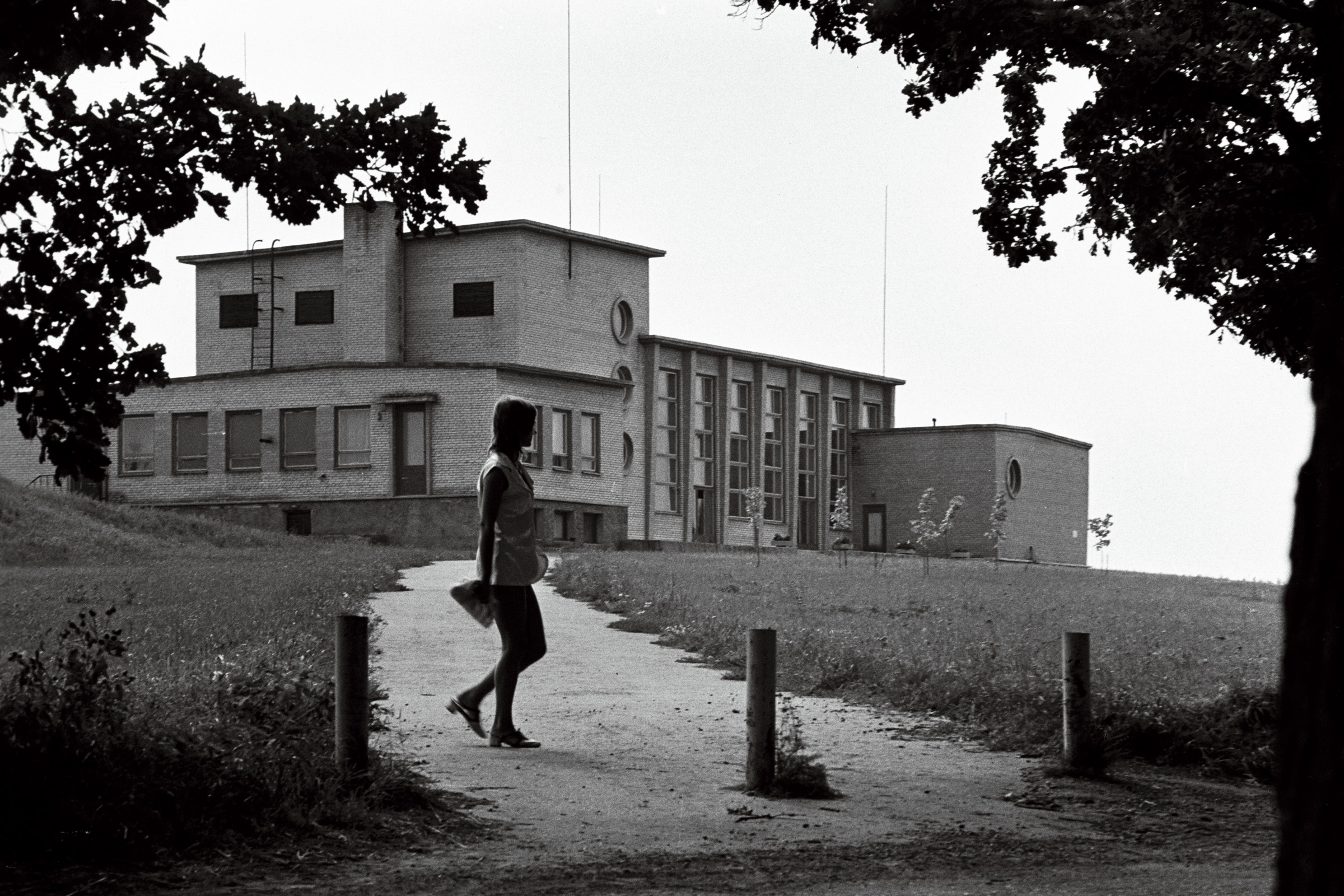Mural Võhandu jõe sünd (“Birth of Võhandu River”) in Mooste Cultural Centre
Year of completion: 1967
Address: Põlva County, Mooste, Lasteaia tee 3
Author Ilmar Malin
Secco
Not under conservation as a cultural monument
Ilmar Malin (1924–1994) graduated the Estonian Academy of Arts in Tallinn in 1954, after which he worked in his hometown Tartu as an artist, professor, and representative and interpreter of art education and the art scene. Although the importance of surrealism is often emphasised in his artwork, Malin also found symbolistic, philosophic, and religious endeavours important. Like many of his contemporaries, Malin was inspired by the potential to enrich the living space. He has created monumental paintings in Mooste, Tartu, Rapla, and Rakvere.
In the second half of the 1960s, residential estates, a shop, and a cultural centre were built around the Mooste manor complex after standard designs. They were necessary for tending to the employees of the rapidly growing Mooste Modal State Farm. The borough’s centre was designed with a notable sense of piety, and it was granted a Unionwide gratuity in 1969. The cultural centre was built after a standard design by Karl Aarmann (1922–1977), which was also used for the Sürgavere cultural centre in Viljandi County. The interior design in Mooste was carried out by Ülo Sirp, who included artists in his work, as was customary at the time. While Maia Kolberg’s ceramic pannel Käed (“Hands”) was installed in the lobby, Ilmar Malin was painting a fairy-tale-themed piece depicting the birth of Võhandu River in the hall meant for both theatre and sporting activities. In the story, a small boy learns magic words from the language of ravens, freeing a spring from under the rocks, and the Võhandu River saves the townsfolk from thirst. As the mural was the artist’s first, the result was understandably wavering. On the other hand, the piece is a notable example of the optimistic interior design of the 1960s, when artists tried to communicate with the art in such a way that it would be meaningful for both the artist themselves and the visitors of the cultural centre.
Mooste is a place with beautiful nature, characterised by a strong identity and active cultural life. The latter is looked after by art residency MoKS, with the longest spanning tradition in Estonia. The cultural centre is in active use, and the hall is used as a gym by the local school. The mural is therefore in good hands, although ball games have explicably created widespread technical damage to the painting.
Gregor Taul










